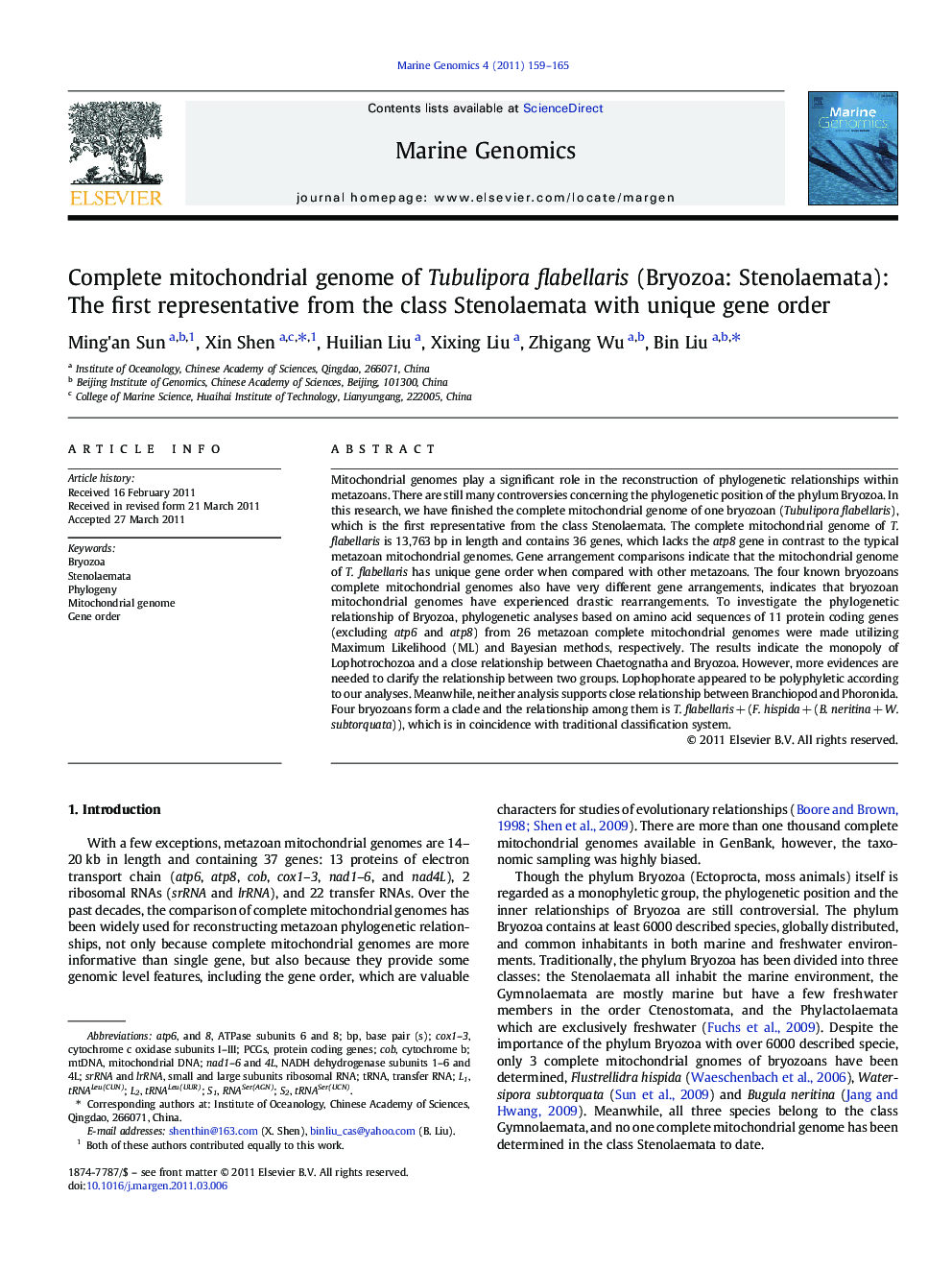| Article ID | Journal | Published Year | Pages | File Type |
|---|---|---|---|---|
| 2058308 | Marine Genomics | 2011 | 7 Pages |
Mitochondrial genomes play a significant role in the reconstruction of phylogenetic relationships within metazoans. There are still many controversies concerning the phylogenetic position of the phylum Bryozoa. In this research, we have finished the complete mitochondrial genome of one bryozoan (Tubulipora flabellaris), which is the first representative from the class Stenolaemata. The complete mitochondrial genome of T. flabellaris is 13,763 bp in length and contains 36 genes, which lacks the atp8 gene in contrast to the typical metazoan mitochondrial genomes. Gene arrangement comparisons indicate that the mitochondrial genome of T. flabellaris has unique gene order when compared with other metazoans. The four known bryozoans complete mitochondrial genomes also have very different gene arrangements, indicates that bryozoan mitochondrial genomes have experienced drastic rearrangements. To investigate the phylogenetic relationship of Bryozoa, phylogenetic analyses based on amino acid sequences of 11 protein coding genes (excluding atp6 and atp8) from 26 metazoan complete mitochondrial genomes were made utilizing Maximum Likelihood (ML) and Bayesian methods, respectively. The results indicate the monopoly of Lophotrochozoa and a close relationship between Chaetognatha and Bryozoa. However, more evidences are needed to clarify the relationship between two groups. Lophophorate appeared to be polyphyletic according to our analyses. Meanwhile, neither analysis supports close relationship between Branchiopod and Phoronida. Four bryozoans form a clade and the relationship among them is T. flabellaris + (F. hispida + (B. neritina + W. subtorquata)), which is in coincidence with traditional classification system.
Research Highlights► The mitochondrial genome of T. flabellaris has unique gene order. ► The mitochondrial genome is the first representative from the class Stenolaemata. ► Bryozoans mitochondrial genomes have experienced drastic rearrangements. ► Phylogenetic results show close relationship between Chaetognatha and Bryozoa. ► Lophophorate appeared to be polyphyletic according to mitochondrial genomic data.
